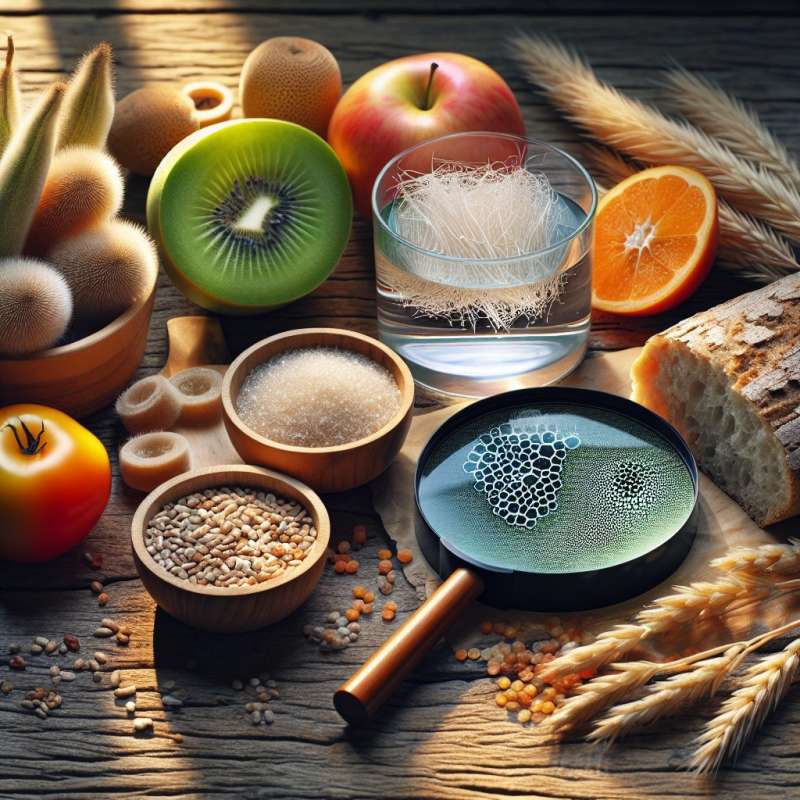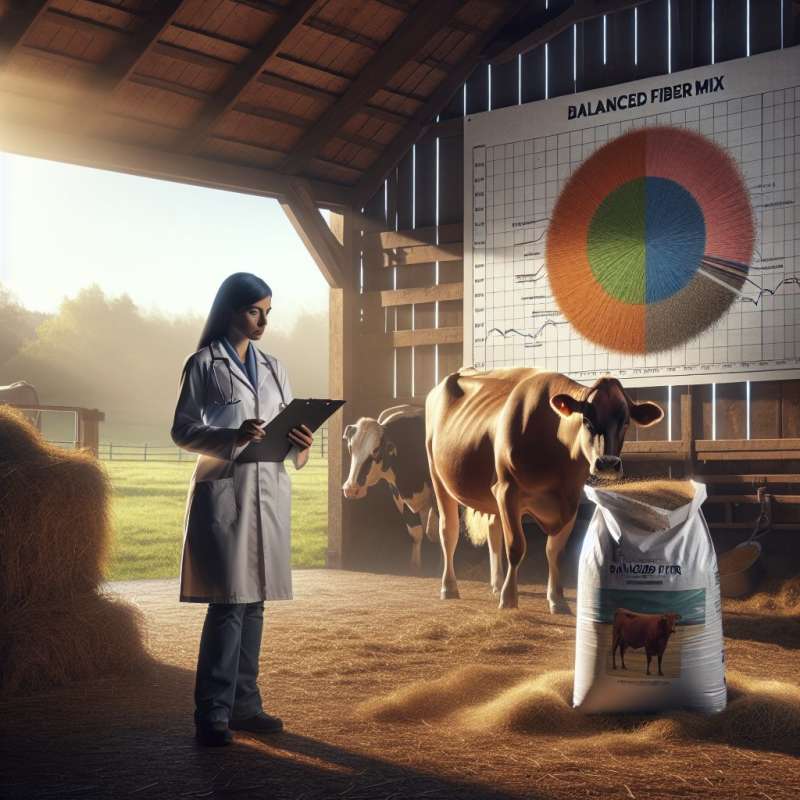
Importance of Fiber
Fiber is crucial for cattle, aiding in digestion and rumen function. It helps with cud formation and saliva production, reducing acidity and preventing disorders like rumen acidosis.
Fiber Types in Feed
There are two fiber types: soluble (pectins, gums) and insoluble (cellulose, hemicellulose, lignin). Soluble fibers are more digestible, impacting energy supply and gut health.
Measuring Fiber Content
Fiber is measured as NDF (Neutral Detergent Fiber) and ADF (Acid Detergent Fiber). NDF estimates cell wall content, while ADF indicates cellulose and lignin levels, essential for evaluating feed quality.
Optimal Fiber Levels
Cattle diets should balance fiber for optimal health. Too little causes acidosis, while too much leads to low energy intake and weight gain issues. Adjusting levels is an intricate science.
Fiber Sources Matter
Not all fiber sources are equal. Forages like grasses have different fiber compositions than grains. Nutritionists often balance diets using various feedstuffs to meet specific fiber requirements.
Fiber and Microbiota
Fiber fermentation in the rumen is pivotal for beneficial microbiota growth. These microbes help synthesize vitamins and fatty acids, crucial for cattle health and productivity.
Advanced Fiber Strategies
Emerging research suggests that specific fiber types can optimize milk composition and meat quality. Strategic feedstuff selection can influence fatty acid profiles and enhance product value.
What does fiber aid in for cattle?
Milk flavor enhancement
Digestion and rumen function
Horn growth regulation
Company